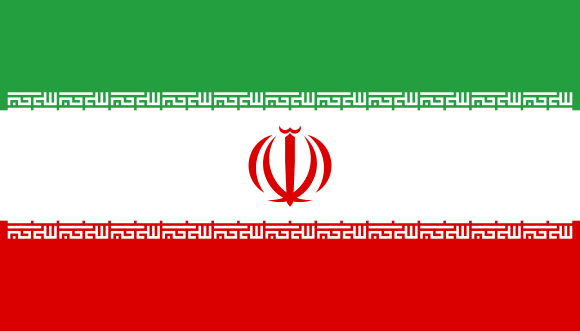Shahrak-e Namak Abrud

Shahrak-e Namak Abrud is a village in Kelarestaq-e Gharbi Rural District , in the Central District of Chalus County , Mazandaran Province , Iran . At the 2006 census , its population was 354 , in 71 families .
Shahrak-e Namak Abrud is a touristic village and has an aerial tramway which starts at the sea level near the shores of the Caspian Sea and ends on the top of the Alborz heights crossing dense forest area of northern Iran . There are numerous villa cities around it which form a vacation region for the people of Tehran .
Located 12 km from East Chalus is new Namak Abroud township covering some 650 hectares , with the Caspian sea on its north and Madoban (the Alborz) on its south . Approximately 200 hectare violet and box-tree parks made the area very spectacular . Moreover , Madoban-the dense forest created a remarkably attractive landscape . The original plan was designed by consulting engineer ; Mr. Dazz , Mr.Charkhab , Mr.Hovard Homfari . Hovard Homfari’s report said that Chalous-Ramsar Road bisected the area-with the northern side of the road dedicated to building villas , and Hite hotel and marinas suggested part and the related facility and apartment complex on its southern side .
Badab-e Surt

Badab-e Surt is a natural site in Mazandaran Province in northern Iran , 95 kilometres (59 mi) south of the city of Sari , and 7 kilometres (4.3 mi) west of Orost village . It comprises a range of stepped travertine terrace formations that has been created over thousands of years as flowing water from two mineral hot springs cooled and deposited carbonate minerals on the mountainside .
Veresk Bridge

The Veresk bridge (Varisk) is a bridge in Iran . It was constructed mostly by Austrians before World War II by leadership of an engineer named Walter Aigner , constructed during the reign of Reza Shah . It is located in the Veresk district of Savadkuh County , in Mazandaran province .
During World War II , it was known as the Pol-e Piroozi ("The bridge of victory") . The bridge stands at 110 m (360 ft) tall and its arch measures 66 m (217 ft) long . The bridge serves the Trans-Iranian Railway network in Northern Iran .
The Veresk bridge in Iran connects the railway between Tehran and the Caspian Sea region . It is located in Mazandaran’s Veresk district of Savad Kooh county , 85 kilometers south of Ghaemshahr and connects two of the mountains in the Abbas Abad region . The bridge is one of the masterpieces of the Danish engineering firm Kampsax , (consisting of mostly German and Austrian engineers) serving the Trans-Iranian Railway network in Northern Iran . The construction of this bridge included craftsmen of many nationalities , including many Italian . The Master Carpenter for the construction of the lumber concrete forms was Giacomo Di Marco , from the Friuli region of Italy , and detailed in the book he authored . It has been said after finishing the bridge , people had a fear that the train wouldn’t be able to pass the narrow bridge and that it would break . As a result , the engineer and his family stood under it when the first train passed the bridge (local accounts claim that Reza Shah had asked them to do so anyway) .
Near the bridge is a memorial structure built in memory of all the construction workers who lost their lives in the course of building the Veresk Bridge and its nearby tunnels . The Chief Engineer , Austrian Walter Aigner , following his wishes , is buried in the local cemetery of Veresk . Under the bridge is an underground tunnel through which trains pass after crossing the bridge and gradually dropping altitude and before pulling into the train station . During World War II , it was known as the Pol-e-Piroozi , or the bridge of victory . During the course of the war , Reza Shah was asked by Hitler to blow up all tunnels and bridges , including the Veresk Bridge , on Iran’s railway lines in order to delay the transfer of goods and reinforcement troops to the north for the Russians . He furthermore promised to replace and reconstruct all of such demolished structures following the Germans’ victory in the war . Reza Shah rejected the request . Today trains connecting Tehran to Gorgan or Sari pass over this bridge an average of 4 times a day .
Ramsar Palace

The Ramsar Palace is one of the historic buildings and royal residences in Iran . The palace is in Ramsar , a city on the coast of the Caspian Sea .
The Ramsar Palace was established on a land of 60,000 square meters in 1937 . The area was a historical garden in Ramsar . The palace was used as a summer residence by Reza Shah and then by his son , Mohammad Reza Pahlavi . Mohammad Reza Pahlavi and his second spouse Sorayya Esfendiari spent their honeymoon in the palace .
House of Nima

NimÄ? Yushij also called NimÄ? , born Ali EsfandiÄ?ri , was a contemporary Tabarian and Persian poet who started the she’r-e now also known as she’r-e nimaa'i trend in Iran . He is considered as the father of modern Persian poetry .
He died of pneumonia in Shemiran , in the northern part of Tehran and was buried in his native village of Yush , Nur County , Mazandaran , as he had willed .

